Building Countertops in Place
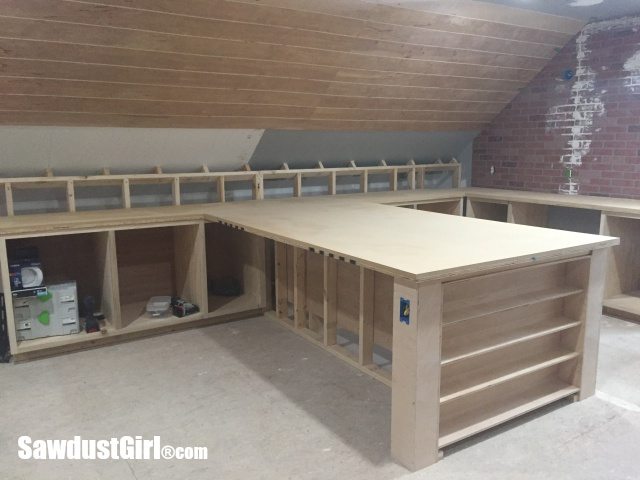
I’m building countertops in place for the craft room. This configuration is way too big to try to do anything different (for a DIY kinda’ countertop). I’m stacking two 3/4″ thick materials and there a lot of seams and they need to be staggered for strength. The two materials get glued together so when the glue dries, will be one GIANT countertop. I’m still “doing the dance” of hopping from one project to the next while glue sets, plaster dries or I wait for the next time I can get a helper for those two person tasks. Everything is coming together like patchwork. SO you’ll see photos in this post with various other projects progressing as well. Like the faux brick and plaster wall (and the ceiling that I haven’t shared yet). But today, let’s just talk about these countertops.
Building Countertops in Place
The base layer is 3/4″ plywood underlayment. I wanted the strongest material I could get for the least amount of money. This underlayment is a bit cheaper than the sanded plywood I bought to build the cabinet frames in this space so I got it. I bought my underlayment about 2 weeks before I installed it so it was acclimated to my space before I started building. I was concerned about chemicals and off-gassing so I did some research to make sure I don’t have to worry about giving myself cancer from using this space. It was very interesting research and even my summary ended up being too long for a “quick bit” right here. Perhaps I’ll put on my “wordy hat” and write up a post just about that.
Moving on with my picture book…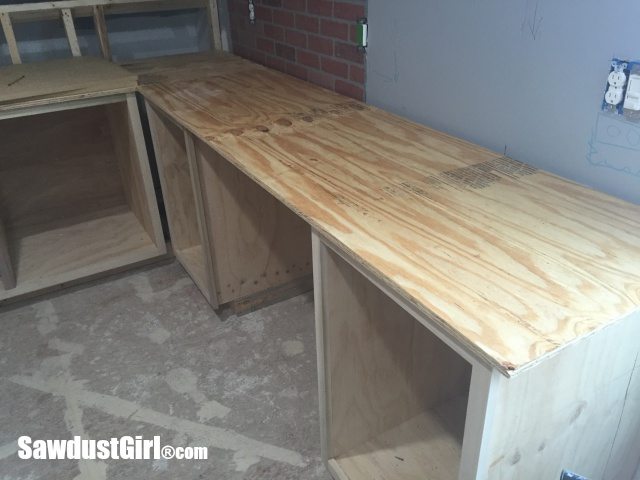
I cut my plywood in half, lengthwise to maximize material. It’s not quite deep enough but that’s ok. I secured the plywood to the cabinets with screws, driven up through the top cleat in the cabinet and into the plywood. I created a 3/4″ overhang with the plywood – so it extends past the cabinets by 3/4″.
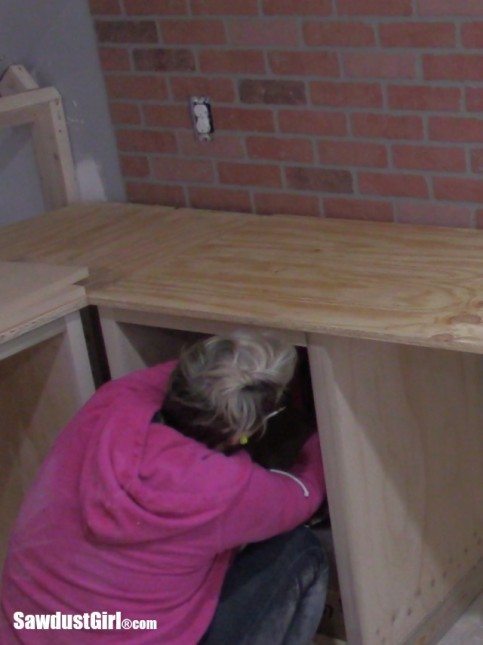 I completely covered the entire plywood surface with glue. The speedball roller is a great glue spreader. Just make sure you don’t let the glue dry on the roller.
I completely covered the entire plywood surface with glue. The speedball roller is a great glue spreader. Just make sure you don’t let the glue dry on the roller.
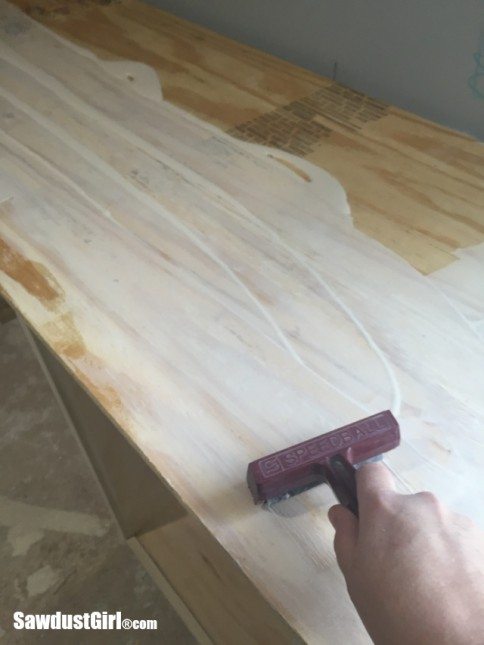 I’m using 3/4″ MDF on the top. I used screws to pull it tightly together with the plywood from underneath. I used all the clamps I own to close up the front seam because I want the two pieces completely sandwiched together. Tight with no gaps because I will cover the front edge with some facing later on and I want an even, uniform thickness all the way across the front of the joined countertop.
I’m using 3/4″ MDF on the top. I used screws to pull it tightly together with the plywood from underneath. I used all the clamps I own to close up the front seam because I want the two pieces completely sandwiched together. Tight with no gaps because I will cover the front edge with some facing later on and I want an even, uniform thickness all the way across the front of the joined countertop.
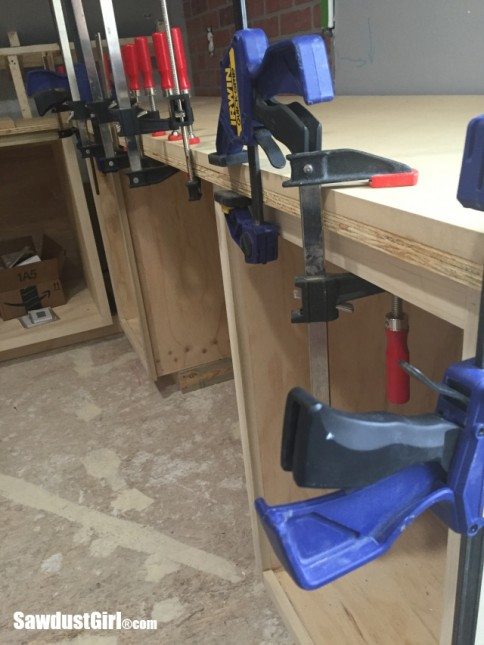
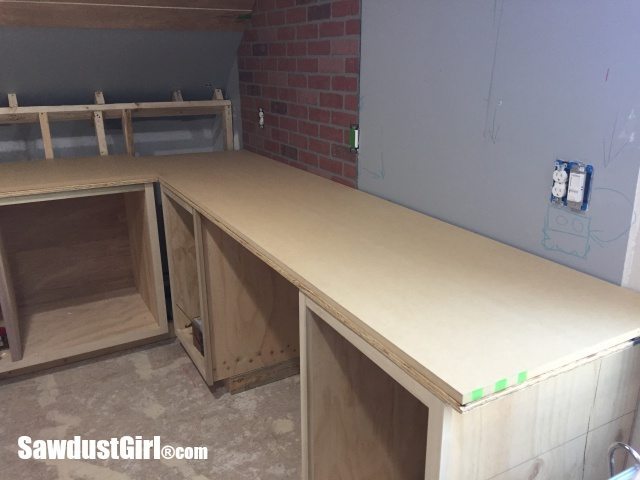
I did the L for my little dest area and then the island.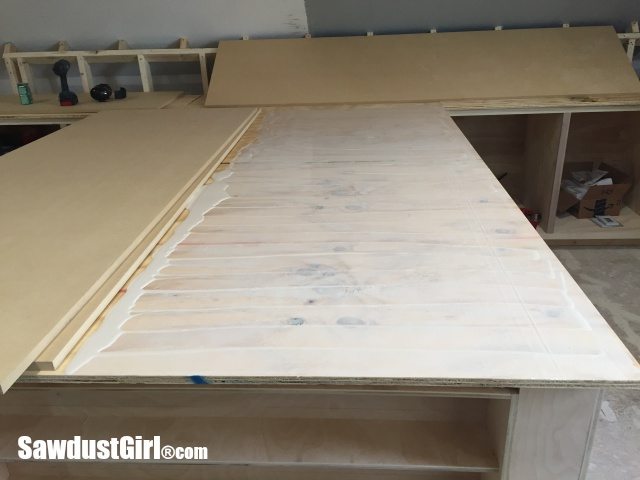 I used two pieces of plywood that spanned the whole width of the island with the seam in the center. Then the MDF layer was two pieces that spanned the length with the seam going in the opposite direction. I glued and screwed and clamped these pieces down.
I used two pieces of plywood that spanned the whole width of the island with the seam in the center. Then the MDF layer was two pieces that spanned the length with the seam going in the opposite direction. I glued and screwed and clamped these pieces down.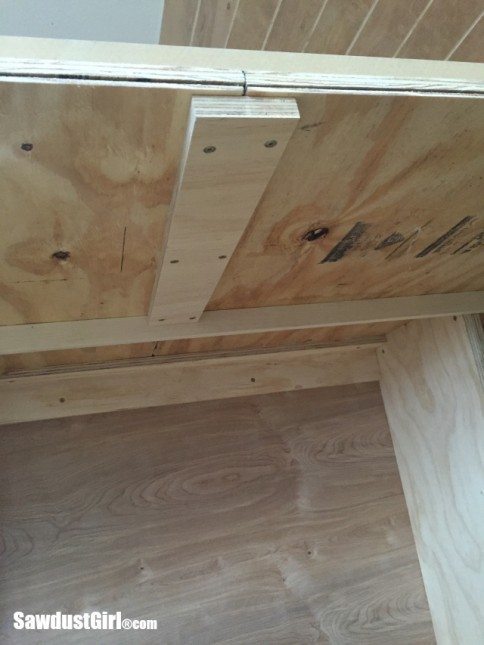 However, I did screw a cleat underneath the plywood to hold the two pieces together at the seam while I glued up the MDF. After the glued dried, the bottom pieces were melded to the piece of MDF so I removed my little cleat and that joint is strong!
However, I did screw a cleat underneath the plywood to hold the two pieces together at the seam while I glued up the MDF. After the glued dried, the bottom pieces were melded to the piece of MDF so I removed my little cleat and that joint is strong!
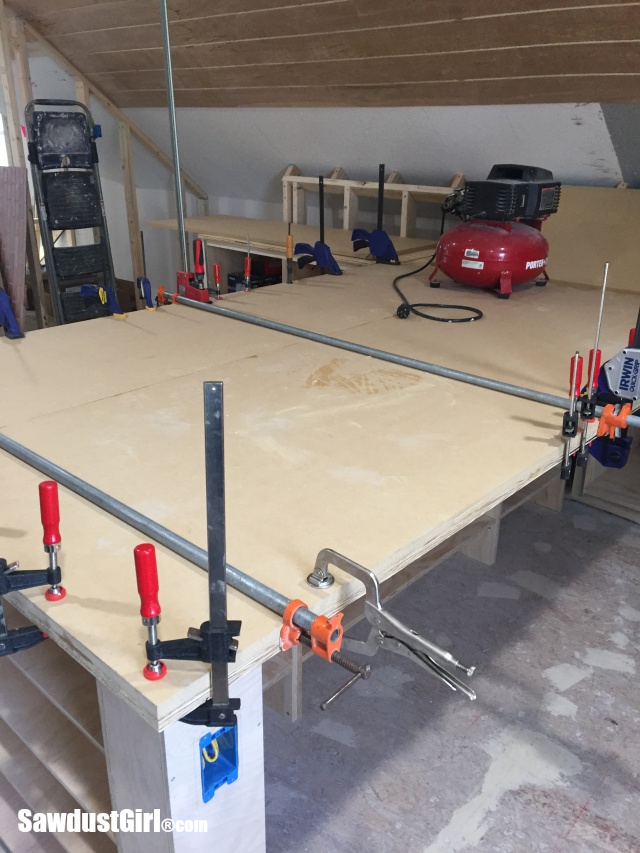
I used pipe clamps to pull the two pieces of MDF together as tightly as possible, clamped all around the perimeter and screwed the two layers together from underneath.
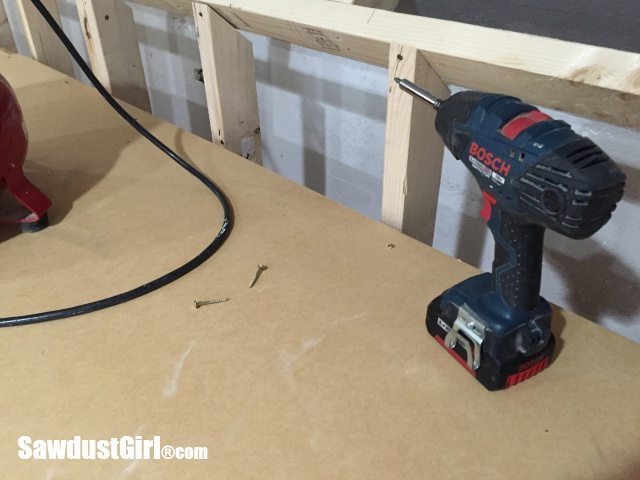
In the areas where I couldn’t get underneath to drive screws up through the plywood into the MDF, I just screwed them together from the top. The back is going to be covered with cabinets anyway so I’m not worried about these holes but they would be easy to fill if needed.
Actually, I can get back behind there but I’d already crawled back and forth half a dozen times that day and I was done with that! 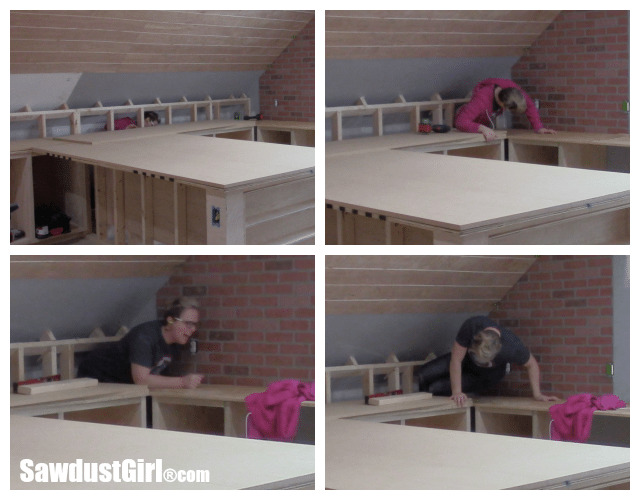 When all the glue was dry, I scraped off the squeeze out with this scraper I bought for this very reason. This is the first time I’ve used it and by golly — it’s awesome!
When all the glue was dry, I scraped off the squeeze out with this scraper I bought for this very reason. This is the first time I’ve used it and by golly — it’s awesome!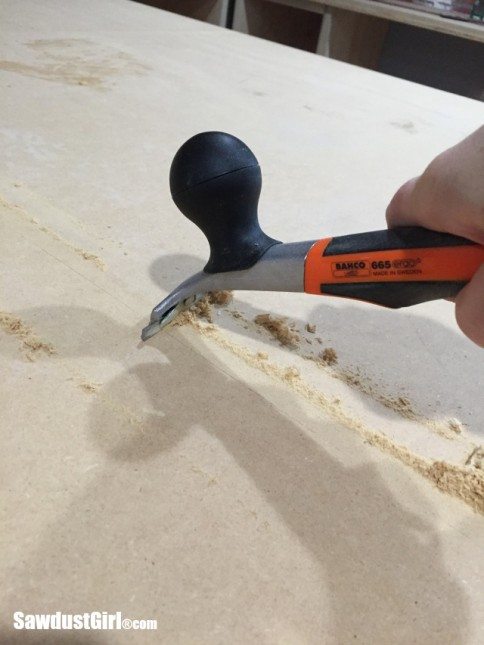
I also had to scrap off a big mess of glue in the middle of the island where I’d dipped the end of one piece of MDF in some glue and then plopped it on top of the other while I was trying to finagle everything into place.

Building countertops is kind of hard work. Especially giant ass countertops. And it’s dirty work too. I got filthy from crawling around behind the cabinets and laying on the floor to drive screws up into the countertop.
The hard work (on the countertop) is finally done though so now I can concentrate on making it pretty…but I learned from my Pantry Countertop experience not to finish it until everything else is done. So for now, the countertop is just a platform for me to stand on while I finish the ceiling and another place to pile all my tools while I continue to work on all the other projects I have going on in this room.
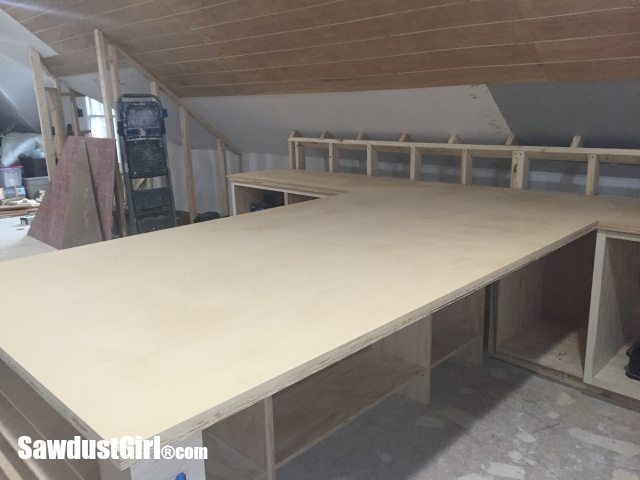
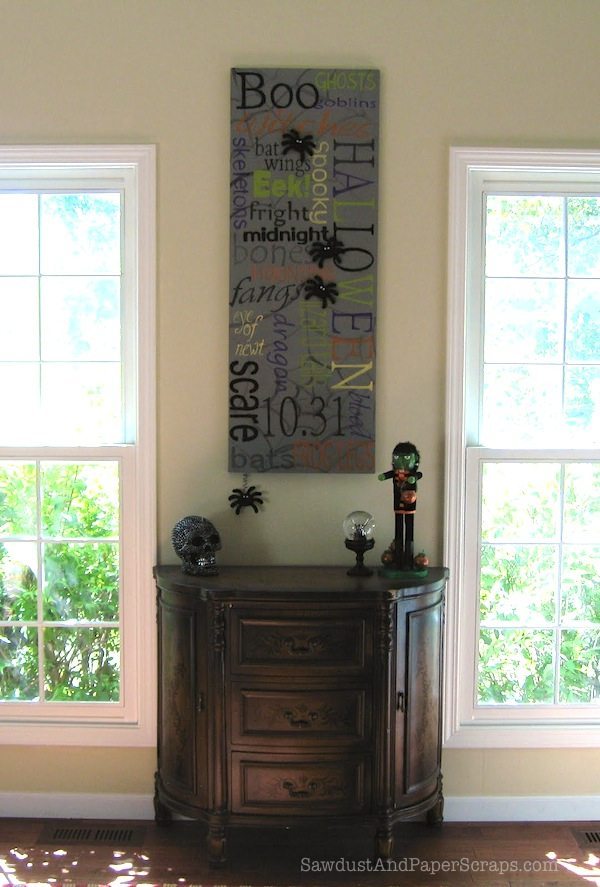
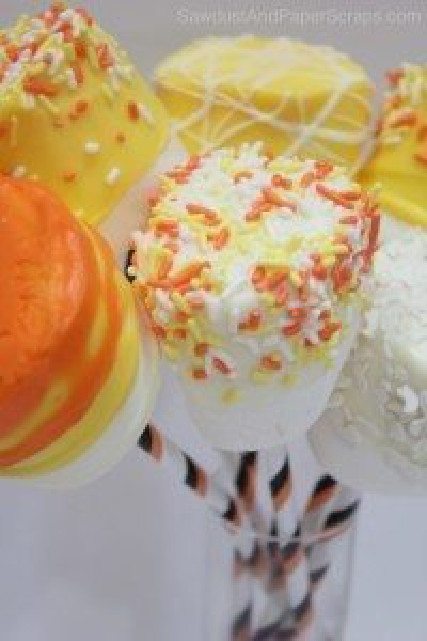
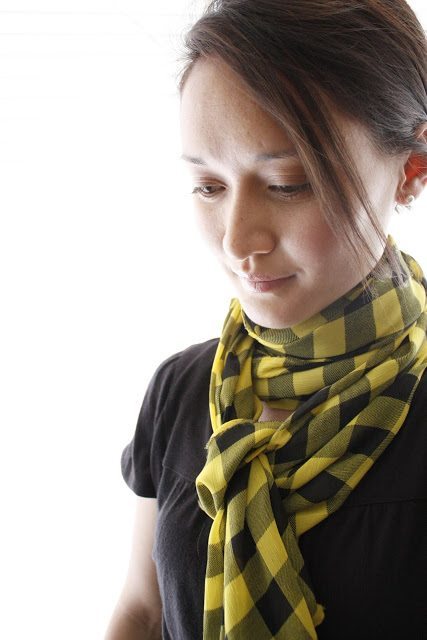


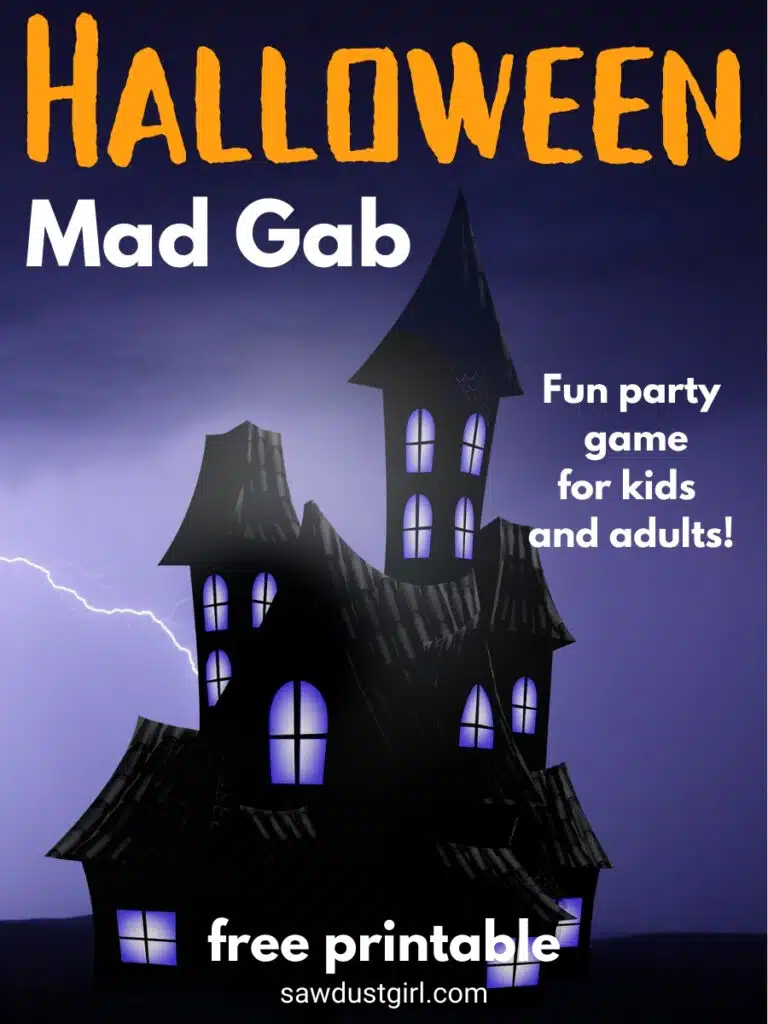
Hi Heather, you can see all the posts on the craft room here: https://sawdustgirl.com/category/my-home/tennessee-house/craft-room/
I’d love to see the finished project. Wondering what you did against the back wall. I have a very similar space and was thinking of putting my island on the opposite straight wall but I like how this works with the slanted wall.
How did you end up finishing the counter top?